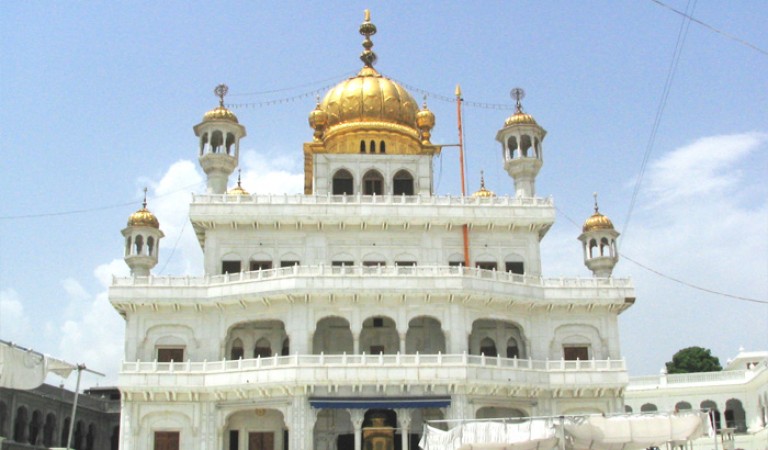
Akal Takht translated as Eternal Thorn. It is a component of the Amritsar Golden Temple complex as well. Guru Hargobind Sahib laid the building's foundation. A corridor connects the Akal Takht and Harmandir Sahib, which are located next to each other. Akal Takht, the structure next to the Golden Temple, has a special significance. The Akal Takht represents the administration of justice and temporal activities, whilst the Golden Temple represents spiritual instruction. The Guru Granth Sahib is kept in the Golden Temple during the day and the Akal Takht Sahib at night. Before entering the battlefields in the past, all Sikh warriors came here to ask for blessings.
Sikhs used to congregate at the Akal Takht on major occasions like Baisakhi and Diwali when they were engaged in a guerilla battle in the forests during the 18th century. The locals used to gather for general meetings and vote on resolutions. Of the Five Takhts, the Akal Takht is the oldest.
Akal Takhat, the highest temporal seat of Sikhism was founded by the Sixth Sikh master Guru Har Gobind Sahib Ji in the year 1609, assisted by Baba Budha Ji and Bhai Gurdas. Guru named it Akal Takhat (The throne of Almighty). Guru Hargobind Sahib used to hold his court and listened to the woes of the needy. Guru wore two swords of Miri and Piri at this place, the worldly emperor robe with a plume on the turban ordered the Sikhs to bring weapons, and horses as offerings and be saints and soldiers as well. The tradition of singing ballads of war heroes with stringed instruments (Sarangi and Dhad) began at this place.
Also Read:Takht Sri Damdama Sahib
The Jathedar of the Akal Takhat is the highest spokesperson of the Sikh Panth and is meant to be a spiritual leader without control or influence from any outside, politically motivated sources. The present Jathedar is Bhai Joginder Singh Vedanti.
With their own hands, Guru Hargobind ji, Bhai Gurdas ji, and Baba Buddha ji constructed the original Akal Takht. The platform was constructed without the help of any other people or artists. The guru's seat would serve the Panth forever, according to Guru Ji. In defiance of Jehangir's royal decree that stated that only the Emperor himself might sit on a raised platform higher than three feet, Guru Ji raised the height of the platform to twelve feet. Guru Hargobind would frequently sit on the elevated Takht platform in royal regalia and administer justice to all Sikh conflicts.
The Harimandir Sahib was constructed slightly higher than the Akal Takhat, indicating the importance of seeking spiritual favor as the top priority. A similar balance of assertion and submission was incorporated into Guru Hargobind's daily routine, which alternately accentuated the throne platform with its assertion of sovereignty and temporal authority and the shrine with its spiritual function and self-effacing architectural symbolism. The Guru began each day with worship in the Harimandir; he then went on a hunt in the late morning; granted audience from the Akal Takhat in the afternoon; returned to the shrine for prayers and hymns in the evening; and returned to the Akal Takht at night with his followers to listen.
Also Read: Takht Sri Keshghar Sahib: Birthplace of Khalsa
It is from the Akal Takhat that Hukamnamas (edicts or writs) are announced to provide guidance or clarification on any point of Sikh doctrine or practice. It may lay under penance persons charged with violation of religious discipline or with activity prejudicial to Sikh interests or solidarity. It may place on record its appreciation of outstanding services rendered or sacrifices made by individuals espousing the cause of Sikhism or of the Sikhs. Importantly, no individual is above the Akal Takhat.
The Sarbat Khalsa once convened at the Akal Takhat and decided to punish Maharaja Ranjit Singh for his misdeeds with a predetermined amount of lashes on his back. Ranjit Singh, the Gursikh, submitted to the rules and showed up at the Akal Takhat to be reprimanded. However, the king received a severe fine instead of being physically punished.
Also Read: Three Pillar of Sikhi: Spiritual Elevation